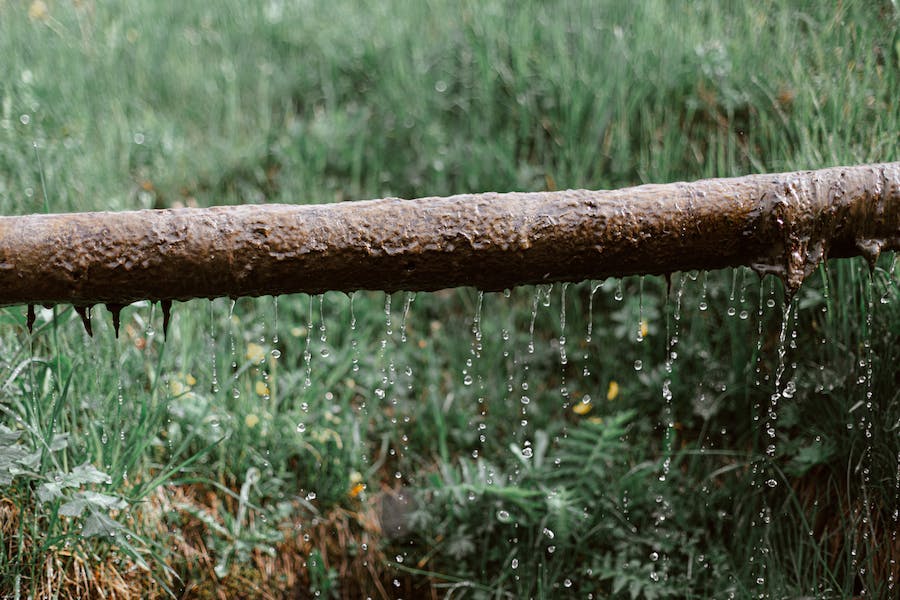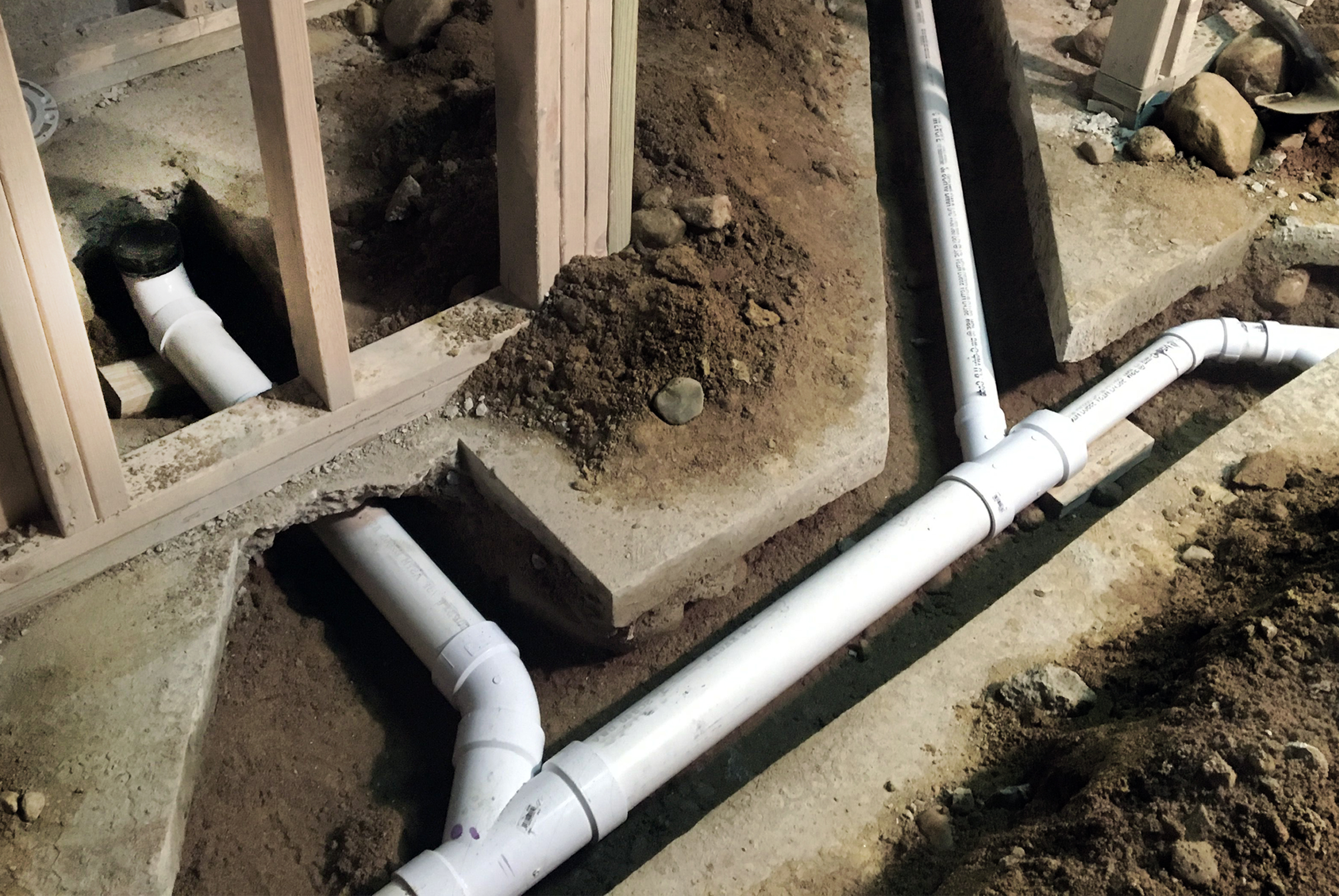
To locate a sewer line under a concrete slab, use a pipe locator device after accessing the main drain cleanout. Alternatively, contact professionals who employ acoustic or pipe inspection cameras.
Discovering the pathways of concealed sewer lines beneath a formidable concrete slab can seem daunting for any homeowner or maintenance professional. Yet, with the rise of advanced diagnostic tools, this task has become significantly less invasive and more precise. An insightful understanding of your home’s layout and some detective work might lead you to the main sewer cleanout—a starting point for tracing these underground lines.
Homeowners should brace themselves for a bit of groundwork, or consider hiring experts who can swiftly pinpoint the sewer line’s trajectory using specialized equipment. Their methods often involve minimal disruption to your property, ensuring that the process of identifying the line’s location is as smooth and efficient as possible.

Credit: www.smileydrain.com
Introduction To Sewer Line Troubles
Finding a sewer line under a concrete slab is a challenge many homeowners face. It’s a crucial part of maintaining your home’s plumbing system. Noticing problems early can save time and money. Let’s explore the early signs and potential consequences of sewer line issues.
Early Signs Of Sewer Line Problems
Awareness of the early signs can prevent serious damage. Look out for these indicators:
- Slow drains: Water takes longer than usual to go down.
- Bad odors: Unpleasant smells come from drains or yard.
- Lush spots: Parts of your lawn look too green or wet.
- Backing up: Water or sewage backs up into the home.
Consequences Of Ignoring Sewer Line Issues
Letting problems go unresolved can lead to bigger issues:
| Consequence | Description |
|---|---|
| Property Damage | Water damage to home structures from leaks or breaks. |
| Health Risks | Exposure to harmful bacteria and mold growth. |
| High Repair Costs | Smaller issues become expensive repairs. |
| Decreased Home Value | Potential buyers get deterred by plumbing issues. |
Preparation Steps
Finding a sewer line under a concrete slab is critical. Proper preparation ensures a smooth process. Let’s dive into the essential first steps.
Gathering The Right Tools
Having the correct tools is the first step. A professional plumber’s camera can help. This camera goes into drain lines to see the sewer line.
- Pipe locator
- Jackhammer or concrete saw
- Safety goggles and gloves
- Measuring tape
A list of tools can save time. Ensure each item is ready before starting.
Safety Measures Before Starting
Safety comes first. Before breaking concrete, know the risks. Workers should wear the right gear.
- Wear safety goggles to protect eyes from concrete chips.
- Protective gloves guard against cuts and abrasions.
- Ear protection is a must due to loud noise from power tools.
- Ensure the work area is well-ventilated.
Always double-check safety gear before beginning. Remember, staying safe is the top priority.
Initial Inspection
Finding a sewer line under a concrete slab is tricky. Your first step is a careful initial inspection. This step helps you understand where to look. Take a smart approach to avoid damage and extra costs.
Visual Examination of the Area
Visual Examination Of The Area
Start with what you can see. Look for signs on the surface. These signs might hint at where the line could be. Check for cracks or settling in the concrete. Plants growing faster in one area could also tell where the line runs.
- Examine the concrete’s surface.
- Look for signs like cracks.
- Note unusual plant growth.
Utilizing Drain Cameras
Utilizing Drain Cameras
Drain cameras are game-changers. They let you see under the slab without drilling. Technicians can guide these cameras through pipes. This way, you can find the exact location of the sewer line. It’s precise and non-destructive.
| Step | Action |
|---|---|
| 1 | Insert camera into drain line. |
| 2 | Navigate camera to suspected area. |
| 3 | Monitor video feed for sewer line location. |

Credit: m.youtube.com
Locating Techniques
Finding sewer lines under concrete slabs can be quite challenging. The right locating techniques make this task easier. Various tools and methods can accurately identify and track sewer line paths without causing damage to the property. Two of the most effective techniques involve electronic locators and acoustic detectors. Here’s how they work:
Electronic Locators for Precision
Electronic Locators For Precision
Using electronic locators is a surefire method to pinpoint sewer lines. This modern technology is precise and non-invasive. The process includes:
- Transmitter attachment: A signal transmitter attaches to the sewer line.
- Signal emission: This tool sends a frequency through the line.
- Receiver usage: A handheld receiver picks up the signal above ground.
The electronic locator maps out the sewer line path with accuracy. Specialists read these signals and mark the ground to reflect the sewer layout underneath.
Acoustic Detectors to Sense Flow
Acoustic Detectors To Sense Flow
Another method is using acoustic detectors. These tools detect sound waves created by water flow within the pipes. The process involves:
- Listening for the water movement sound.
- Identifying changes in acoustic signals.
- Marking spots with the strongest signal for potential access points.
Technicians use sensitive microphones to hear the flow within a sewer line. Marking the strongest sound locations helps reveal the sewer line route under the slab.
Uncovering The Sewer Line
Welcome to the crucial phase in diagnosing and repairing plumbing issues: Uncovering the Sewer Line. This task requires precision and patience, especially when dealing with a concrete slab. You’ll discover practical advice on how to reveal the sewer line efficiently and effectively below.
Concrete Slab Removal Tips
- Identify the sewer line location with a pipe detector.
- Mark the area precisely above the sewer line using chalk or tape.
- Equip yourself with safety gear: gloves, goggles, and ear protection.
- Use a concrete saw or jackhammer to cut through the slab.
- Remove concrete pieces carefully to avoid damage to the pipe.
- Keep tools sharp and well-maintained for efficient cutting.
Minimizing Damage To Surroundings
- Protect adjacent areas with plastic sheeting or plywood.
- Avoid overcutting; stop sawing close to the marked lines.
- Gently tap around the cut area to free the slab fragment.
- Use a hand trowel to remove loose material around the pipe.
- Vacuum debris to keep the workspace clean and visible.
- Inspect for cracks in the pipe before proceeding.
Post-discovery Actions
Discovering a sewer line under a concrete slab kicks off important decisions. Each move ensures the integrity of your home. The next steps involve careful evaluation and decisive action.
Assessing Sewer Line Condition
Begin with a thorough inspection to gauge sewer line health. A licensed plumber often uses video inspection tools. This high-tech approach reveals cracks, blockages, and wear within pipes.
- Clear footage pinpoints specific issues.
- Diagnosis informs the course of action.
- A detailed assessment aids in cost estimation.
Seek a professional plumber with experience. Their skills make the difference. Their tools reach places eyes can’t. Trust in their expertise.
Repair Or Replace: Making The Decision
A pivotal choice follows the assessment phase. Whether to repair or replace depends on several factors. Consider the following:
| Factor | Repair | Replace |
|---|---|---|
| Age of Sewer Line | Younger pipes may warrant repair. | Old, brittle pipes often require replacement. |
| Extent of Damage | Minor damage might need simple fixes. | Extensive harm typically means a new line. |
| Material of Pipes | Durable materials can be repaired. | Outdated materials might need upgrading. |
| Cost | Repairs might be more budget-friendly. | Long-term savings can justify replacement. |
Discuss options with your plumber. Choose a decision that suits your home and wallet. Remember, a quick fix now might mean more trouble later. A full replacement can be a wise investment. Weigh the pros and cons.
Finishing Touches And Future Prevention
Now that you’ve uncovered and repaired your sewer line under the concrete slab, it’s time for the finishing touches and future prevention. This stage is crucial to ensure the job is complete and your property is safeguarded against similar issues down the road.
Restoring The Concrete Slab
After repairing the sewer line, restoring the concrete slab is essential to bringing your space back to normal. Follow these steps:
- Clean debris from the area.
- Prepare reinforcement materials, such as wire mesh.
- Mix and pour concrete into the trench.
- Use trowels to smooth the surface evenly.
- Allow ample curing time before use.
Regular Maintenance To Prevent Future Issues
Prevention is better than cure, especially with sewer lines. A solid maintenance routine can protect your property:
- Conduct regular inspections of your sewer line.
- Watch out for warnings signs, like unpleasant odors or slow drains.
- Ensure proper usage of toilets and sinks, avoiding flushing objects that might cause blockages.
- Get professional sewer line cleaning to remove buildup.

Credit: maplewoodplumbing.com
Frequently Asked Questions On How To Find Sewer Line Under Concrete Slab
How Do I Find A Sewer Pipe Under Concrete?
To locate a sewer pipe under concrete, use a pipe locator device or ground-penetrating radar (GPR). Contact professional plumbing services for accurate detection and to avoid damaging existing pipes.
How Do I Find A Sewer Leak Under My Slab?
Detect a sewer leak under your slab by noticing musty odors, visible cracks, increased water bills, or unexplained mold. Engage a professional plumber for a precise assessment using specialized leak detection equipment.
How Deep Is Sewer Line Under Slab?
Sewer lines under slabs are typically installed at a depth of 12 to 24 inches to protect against freeze and thaw cycles and ensure proper drainage.
How Do I Find An Underground Waste Pipe?
To find an underground waste pipe, use a pipe locator device or contact a professional plumber. Consult building plans or use a ground-penetrating radar for accurate detection. Avoid guesswork; always seek expert assistance.
Conclusion
Uncovering a sewer line beneath concrete isn’t always straightforward, but with the correct approach, it’s achievable. Knowledge of sonar, jackhammers, and pipe locators becomes your best asset. Tackling this project safely and efficiently requires patience and precision. Remember, professional advice is invaluable when DIY methods fall short.
Good luck on your subsurface exploration!




















